Development of a Laser Cladding Technology for Repairing First-Stage High-Pressure Turbine Blades in Gas Turbine Engines
Abstract
1. Introduction
2. Materials, Methods, and Equipment
2.1. Rotor Blade of the GTE DR-59L
2.2. Description of Rotor Blade Heat Model
2.3. Rotor Blade Cladding Material
2.4. Laser Cladding Equipment and Experimental Process
2.5. Investigation of Sample Macrostructure
2.6. Mechanical Testing Equipment
2.7. Worn Rotor Blade Surface Cladding Approaches
2.7.1. Rotor Blade
2.7.2. Sealing Crest and Locking-Piece End of the Rotor Blade
3. Research Results
3.1. Results of Modeling of the Rotor Blade Cladding
3.2. Results of Non-Destructive Testing of Control Sample
3.3. Results of Macroscopic Section Analysis of Control Sample
3.4. Mechanical Testing
3.4.1. Microhardness Analysis
3.4.2. Uniaxial Tension Testing
3.5. Results of Rotor Blade Repair
Results of Non-Destructive Testing
4. Conclusions
Author Contributions
Funding
Data Availability Statement
Conflicts of Interest
References
- Toyserkani, E.; Khajepour, A.; Corbin, S.F. Laser Cladding, 1st ed.; CRC Press: Boca Raton, FL, USA, 2004; p. 280. [Google Scholar] [CrossRef]
- Boguslaev, V.A.; Muravchenko, F.M.; Zhemanyuk, P.D. Technological Support of Operational Characteristics of GTE Parts; OAO Motor Sich: Zaporozhye, Ukraine, 2003; pp. 6–192. [Google Scholar]
- Zheng, J.; Li, Z.; Chen, X. Worn area modeling for automating the repair of turbine blades. Int. J. Adv. Manuf. Technol. 2006, 29, 1062–1067. [Google Scholar] [CrossRef]
- Gao, J.; Folkes, J.; Yilmaz, O.; Gindy, N. Investigation of a 3D non-contact measurement based blade repair integration system. Aircr. Eng. Aerosp. Technol. 2005, 77, 34–41. [Google Scholar] [CrossRef]
- Richter, K.; Orban, S.; Nowotny, S. Laser cladding of the titanium alloy TI6242 to restore damaged blades. In Proceedings of the International Congress on Applications of Lasers and Electro-Optics, San Francisco, CA, USA, 4–7 October 2004; p. 1506. [Google Scholar] [CrossRef]
- Jones, J.; McNutt, P.; Tosi, R.; Perry, C.; Wimpenny, D. Remanufacture of turbine blades by laser cladding, machining and in-process scanning in a single machine. In Proceedings of the 23rd Annual International Solid Freeform Fabrication Symposium—An Additive Manufacturing Conference, Austin, TX, USA, 6–8 August 2012; pp. 821–827. [Google Scholar]
- Nicolaus, M.; Rottwinkel, B.; Alfred, I.; Möhwald, K.; Noelke, C.; Kaierle, S.; Maier, H.; Wesling, V. Future regeneration processes for high-pressure turbine blades. Ceas Aeronaut. J. 2017, 9, 85–92. [Google Scholar] [CrossRef]
- Henderson, M.; Arrell, D.; Larsson, R.; Heobel, M.; Marchant, G. Nickel based superalloy welding practices for industrial gas turbine applications. Sci. Technol. Weld. Join. 2004, 9, 13–21. [Google Scholar] [CrossRef]
- McGraw, J.; Deventer, G.; Anton, R.; Burns, A. Advancements in Gas Turbine Vane Repair. In Proceedings of the ASME 2006 Power Conference, Atlanta, GA, USA, 2–4 May 2006. [Google Scholar] [CrossRef]
- Wilson, J.; Piya, C.; Shin, Y.; Zhao, F.; Ramani, K. Remanufacturing of turbine blades by laser direct deposition with its energy and environmental impact analysis. J. Clean. Prod. 2014, 80, 170–178. [Google Scholar] [CrossRef]
- Bi, G.; Gasser, A. Restoration of Nickel-Base Turbine Blade Knife-Edges with Controlled Laser Aided Additive Manufacturing. Phys. Procedia 2011, 12, 402–409. [Google Scholar] [CrossRef]
- Rottwinkel, B.; Noelke, C.; Kaierle, S.; Wesling, V. Laser Cladding for Crack Repair of CMSX-4 Single-Crystalline Turbine Parts. Lasers Manuf. Mater. Process. 2017, 4, 13–23. [Google Scholar] [CrossRef]
- Kelbassa, I.; Gasser, A.; Wissenbach, K. Laser cladding as a repair technique for BLISKs out of titanium and nickel base alloys used in aero engines. In Proceedings of the Pacific International Conference on Applications of Lasers and Optics, Melbourne, Australia, 19–21 April 2004; Volume 503. [Google Scholar] [CrossRef]
- Sorokin, L.I. Argon-arc cladding of blade blade flanges made of high-temperature nickel alloys. Weld. Prod. 2004, 7, 36–39. [Google Scholar]
- Smyslov, A.M.; Smyslova, M.K.; Selivanov, K.S.; Mingazhev, A.D. Method of Repair of Gas Turbine Blades Made of Nickel and Cobalt Alloys. Patent 2346075; Russian Federation, MPC C22F 1/10. 2009, 2006116330/02 p. 8, Available online: https://patents.google.com/patent/RU2346075C2/ru (accessed on 26 August 2025).
- Lowden, P.; Pilcher, C.; Liberdi, J. Integrated Weld Automation for Gas Turbine Blades. In Proceedings of the ASME 1991 International Gas Turbine and Aeroengine Congress and Exposition, Orlando, FL, USA, 3–6 June 1991. 7p. [Google Scholar]
- Chen, C.; Wu, H.; Chiang, M. Laser cladding in repair of IN738 turbine blades. Int. Heat Treat. Surf. Eng. 2008, 2, 140–146. [Google Scholar] [CrossRef]
- Uenal, T.; Gahn, L.; Kittel, J.; Gasser, A.; Schleifenbaum, J. Process Development for Tip Repair of Complex Shaped Turbine Blades with IN718. Procedia Manuf. 2020, 47, 1050–1057. [Google Scholar] [CrossRef]
- León-Henao, H.; Herderick, E.; Toro, A.; Giraldo-Barrada, J.; Ramirez, A. Assessing the Printability of Rene 65 Powder for Repairing Degraded GTD 111 Gas Turbine Blades Using L-DED and L-PBF. Coatings 2025, 15, 410. [Google Scholar] [CrossRef]
- Brandt, M.; Sun, S.; Alam, N.; Bendeich, P.; Bishop, A. Laser cladding repair of turbine blades in power plants: From research to commercialisation. Int. Heat Treat. Surf. Eng. 2009, 3, 105–114. [Google Scholar] [CrossRef]
- John, C. Chapter 12—Cladding. In Laser Processing of Engineering Materials; Elsevier: Amsterdam, The Netherlands, 2007; pp. 296–326. [Google Scholar]
- Carslaw, H.S.; Jaeger, J.C. Conductionof Heat in Solids; Clarendon Press: Oxford, UK, 1959; p. 510. [Google Scholar]
- ISO 3452-2:2009; Non-Destructive Testing. Penetrant Testing. Part 2. Testing of Penetrant Materials. Standartinform: Moscow, Russia, 2009.
- ISO 13919-1-2017; Welding. Electron and Laser-Beam Welded Joints. Guidance on Quality Levels for Imperfections. Part 1. Steel. Standartinform: Moscow, Russia, 2017.
- Berdnik, O.B. Development of Resource-Saving Remanufacturing Technology for High-Pressure Turbine Blades Made of Heat-Resistant Nickel Alloys. Prometey 2009. Available online: https://rusneb.ru/catalog/000199_000009_003461857/ (accessed on 26 August 2025).
- Available online: https://www.matweb.com/ (accessed on 18 July 2025).
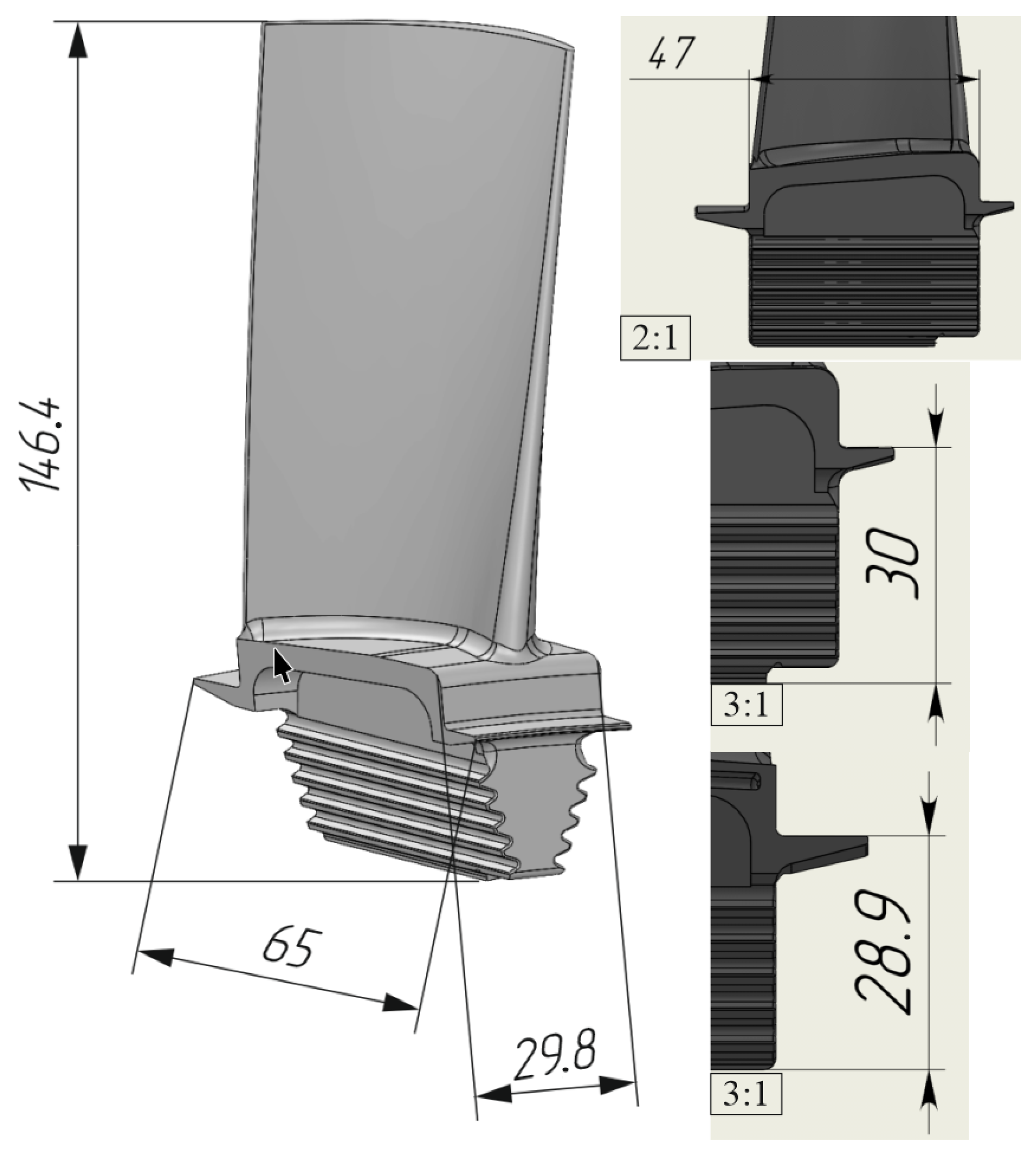
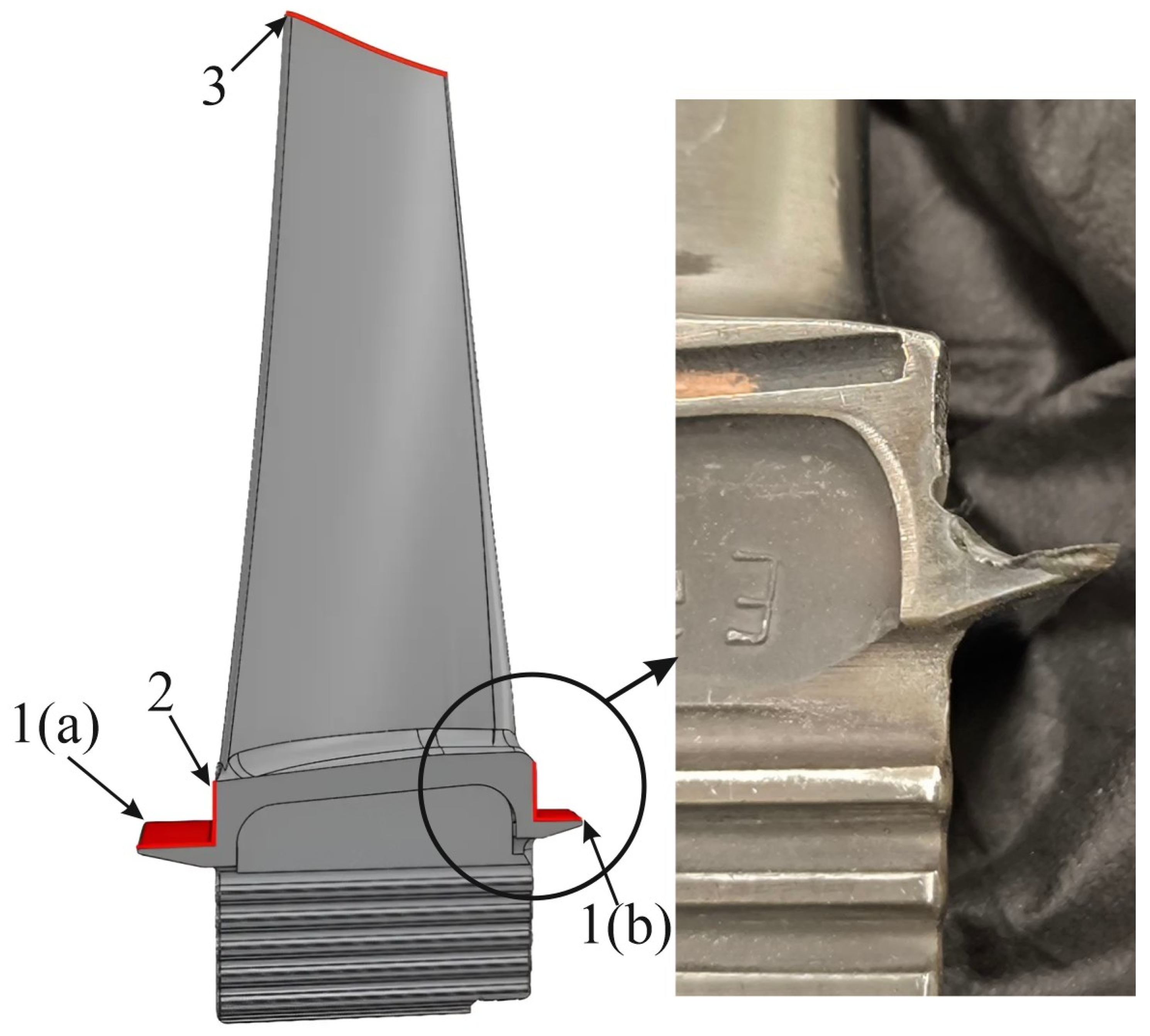

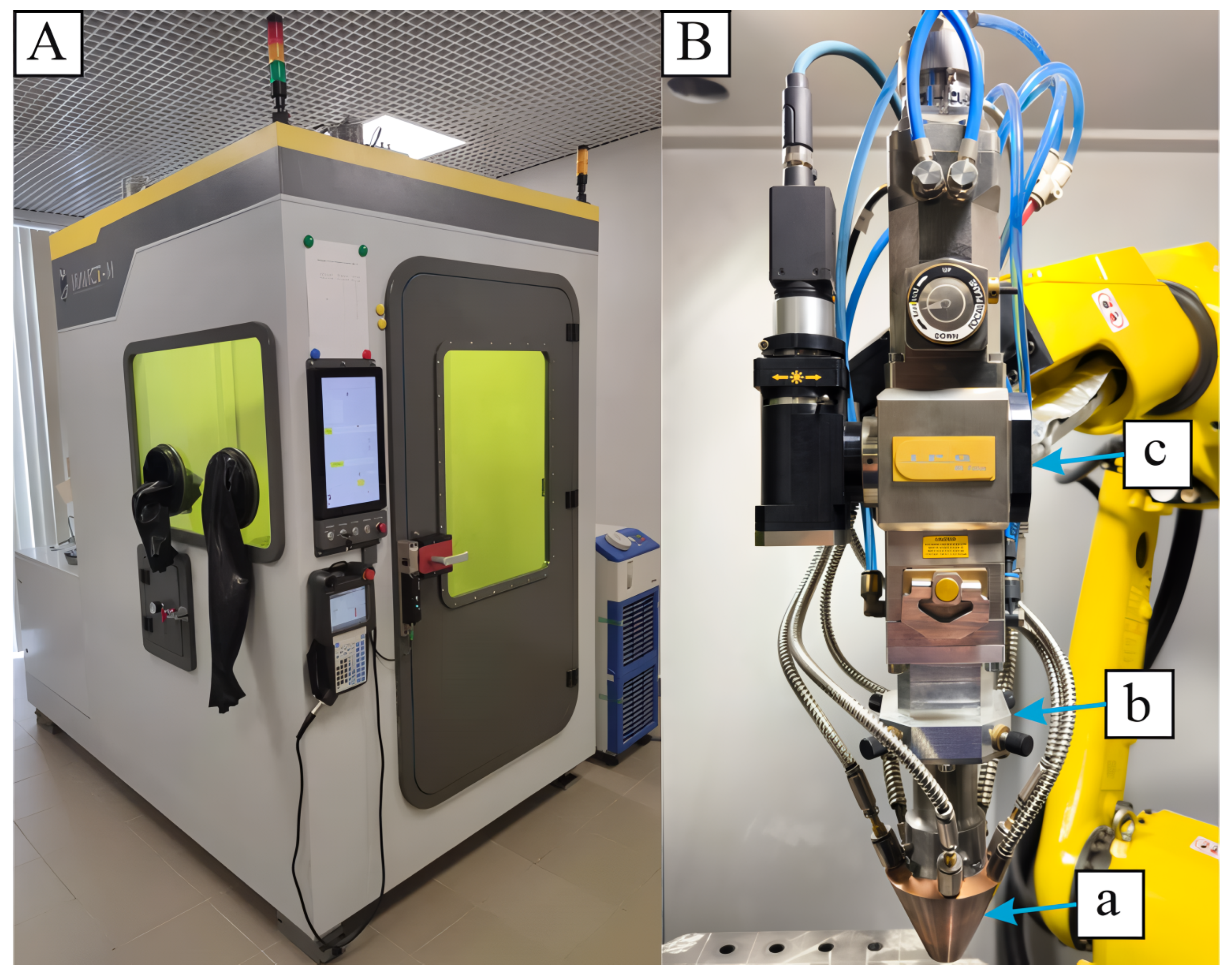
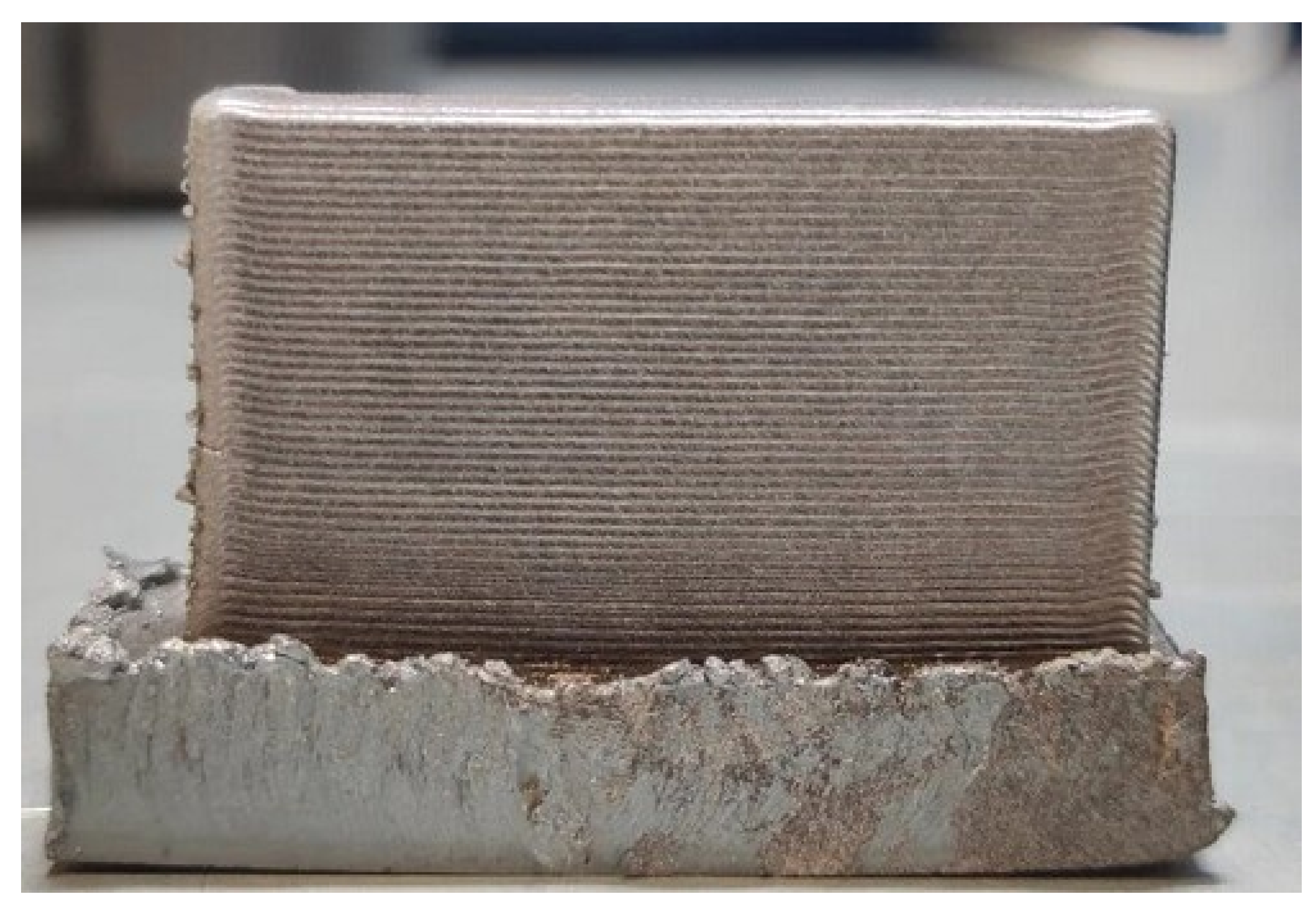
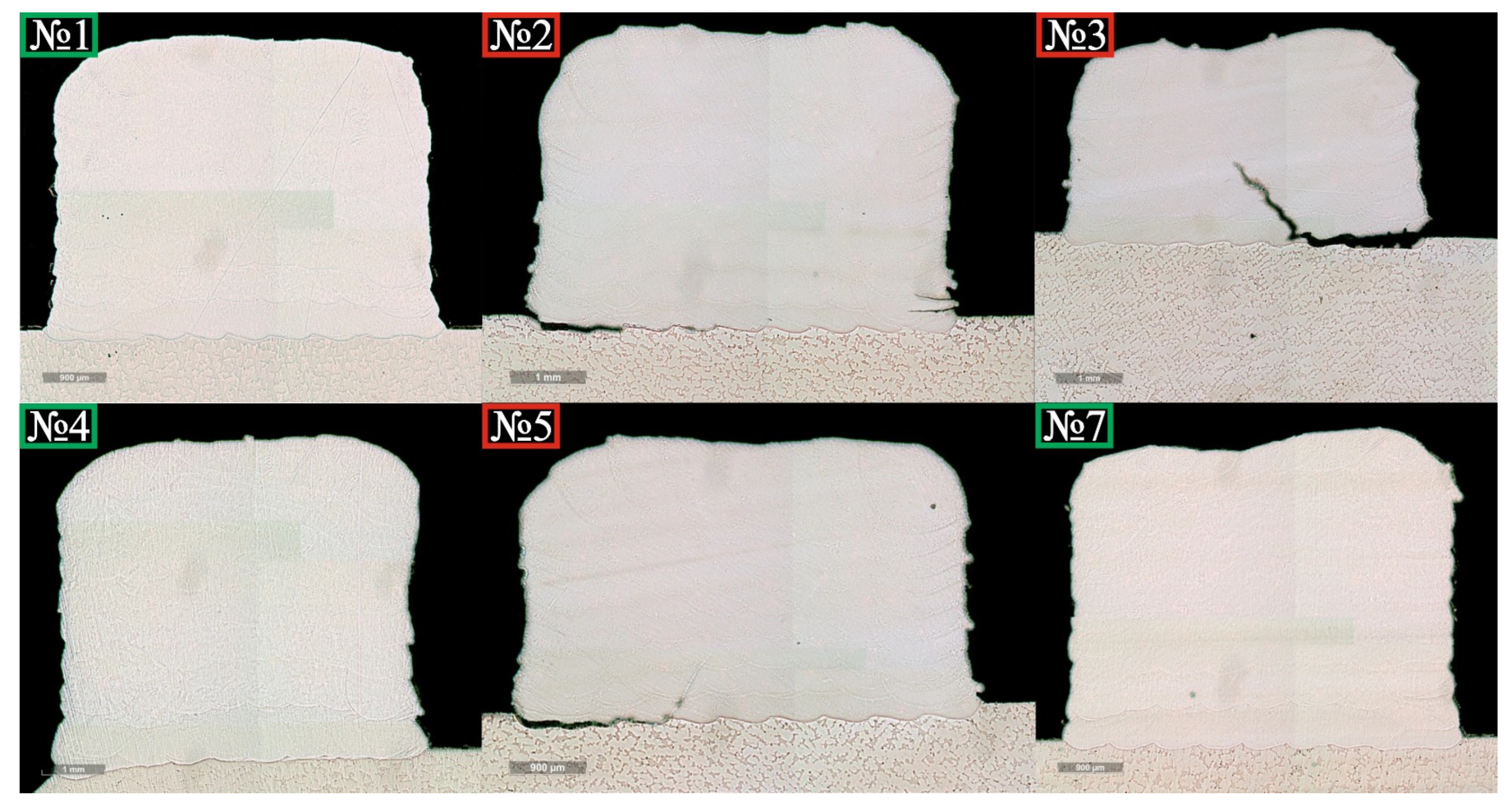
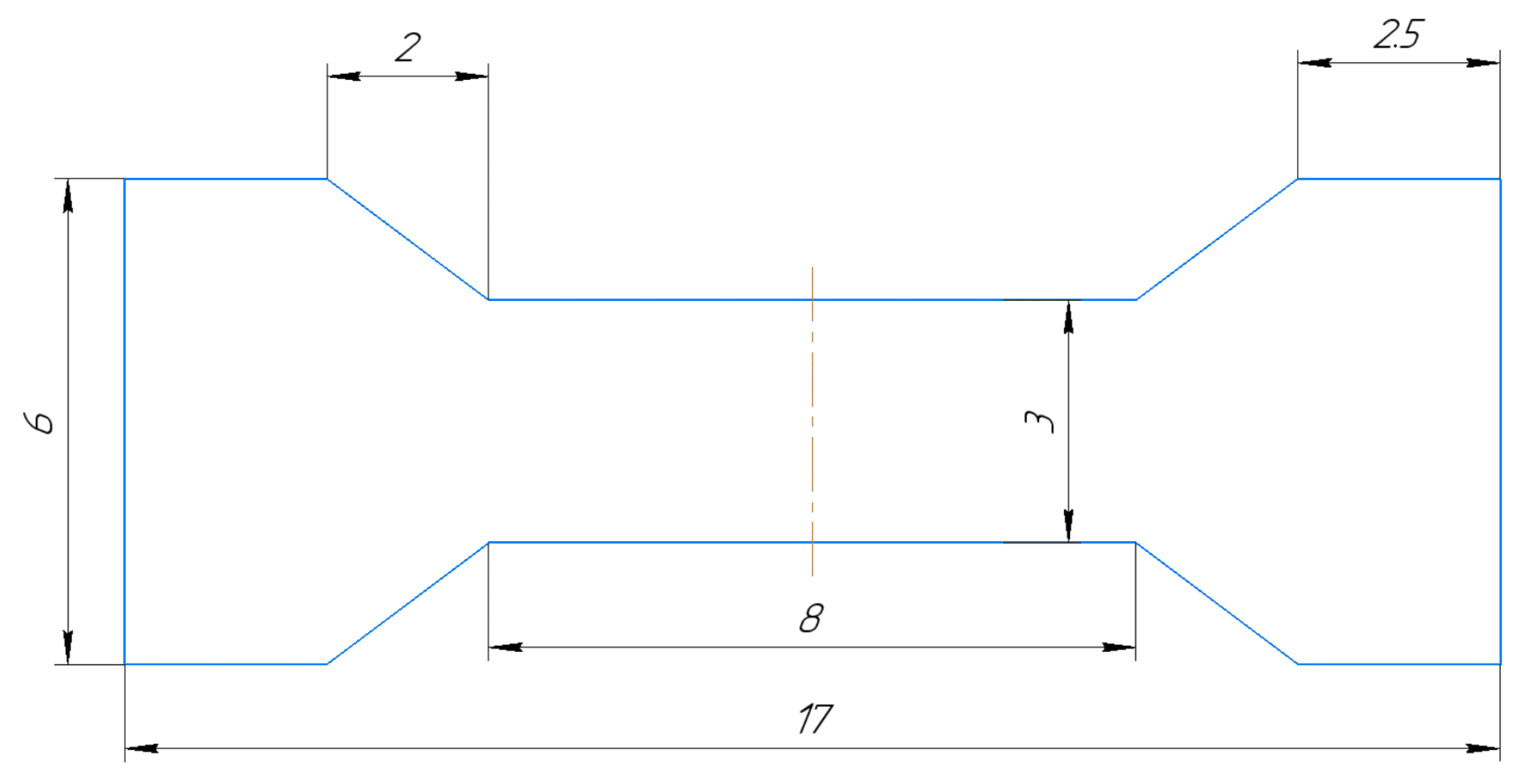
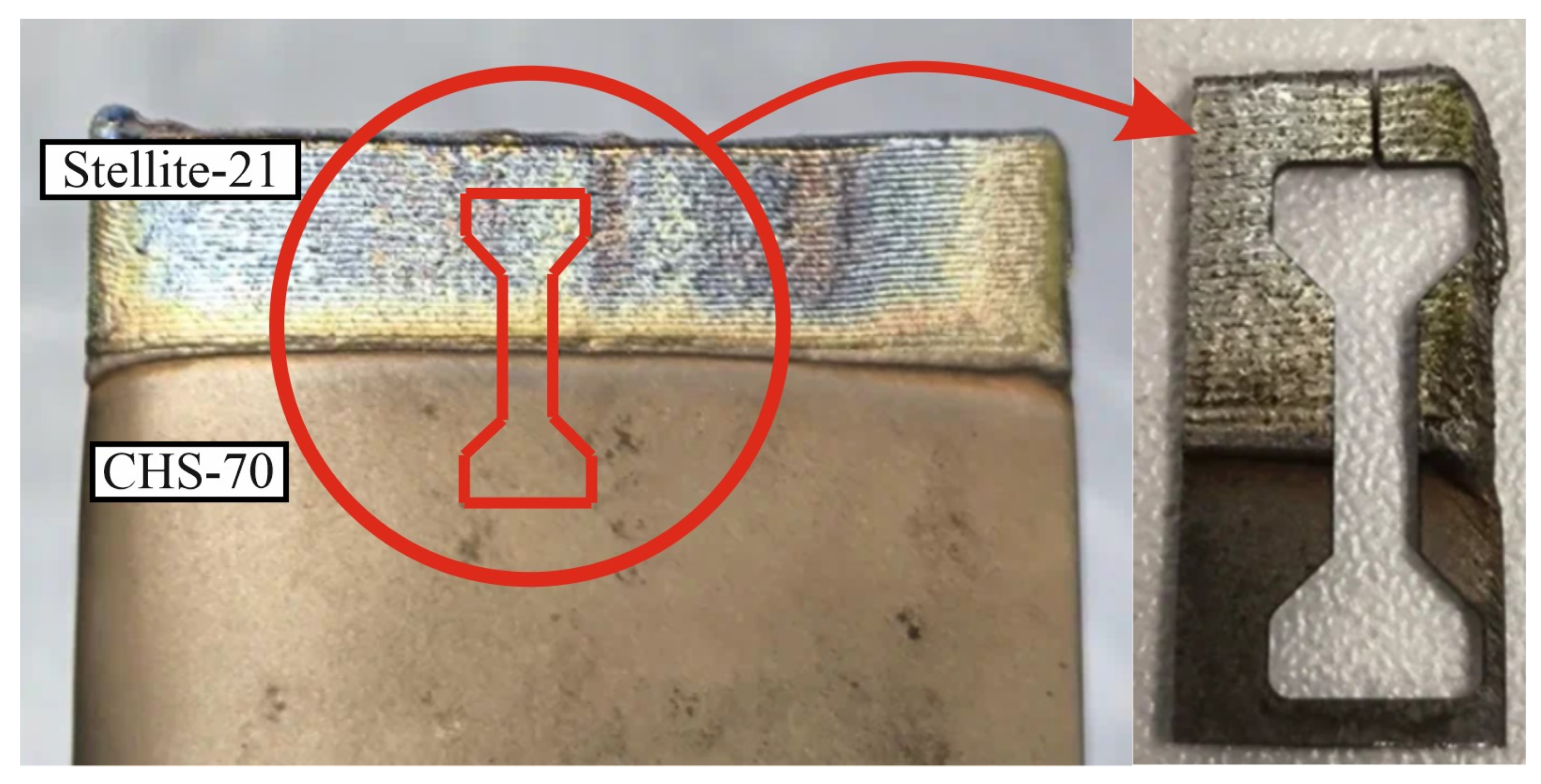

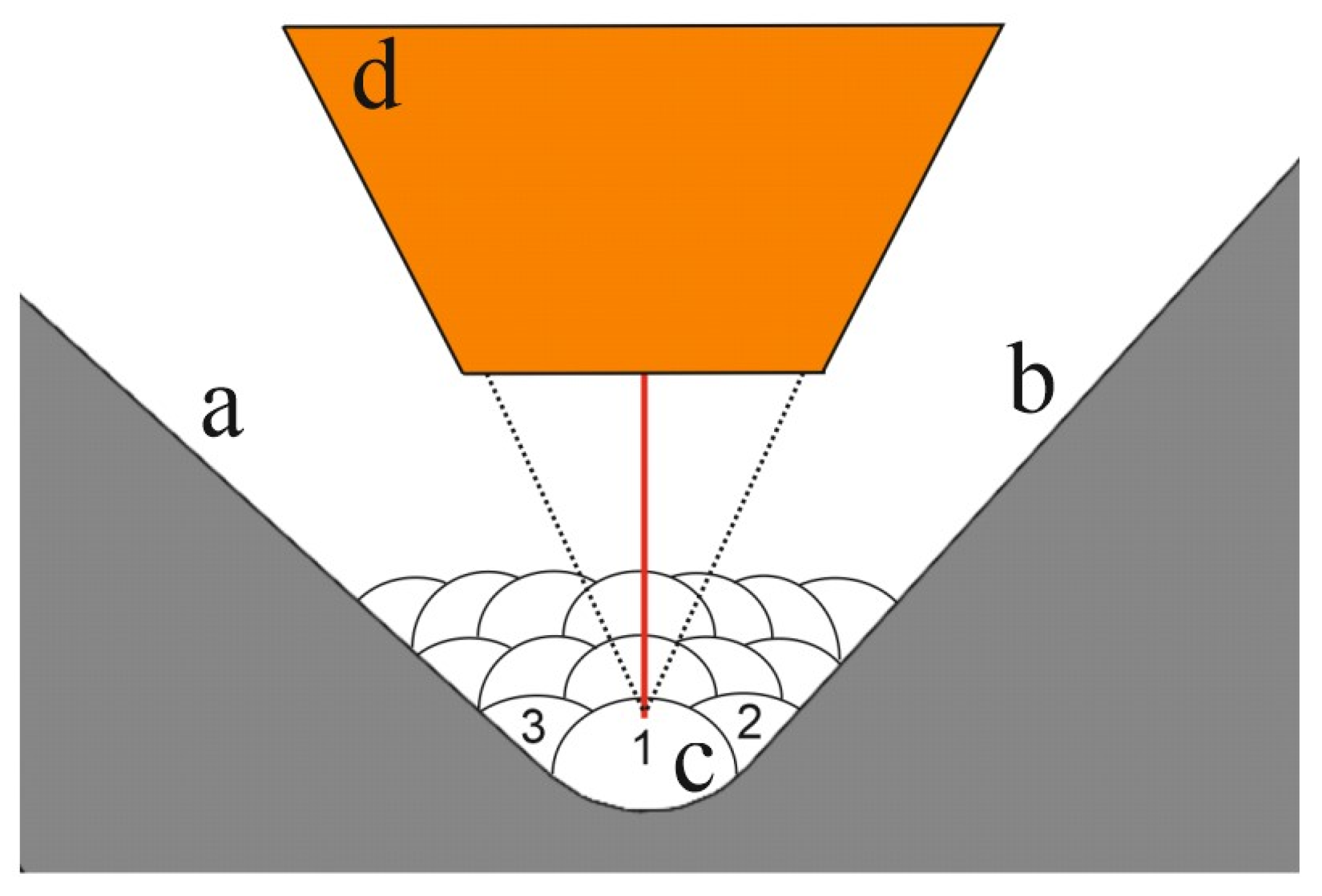
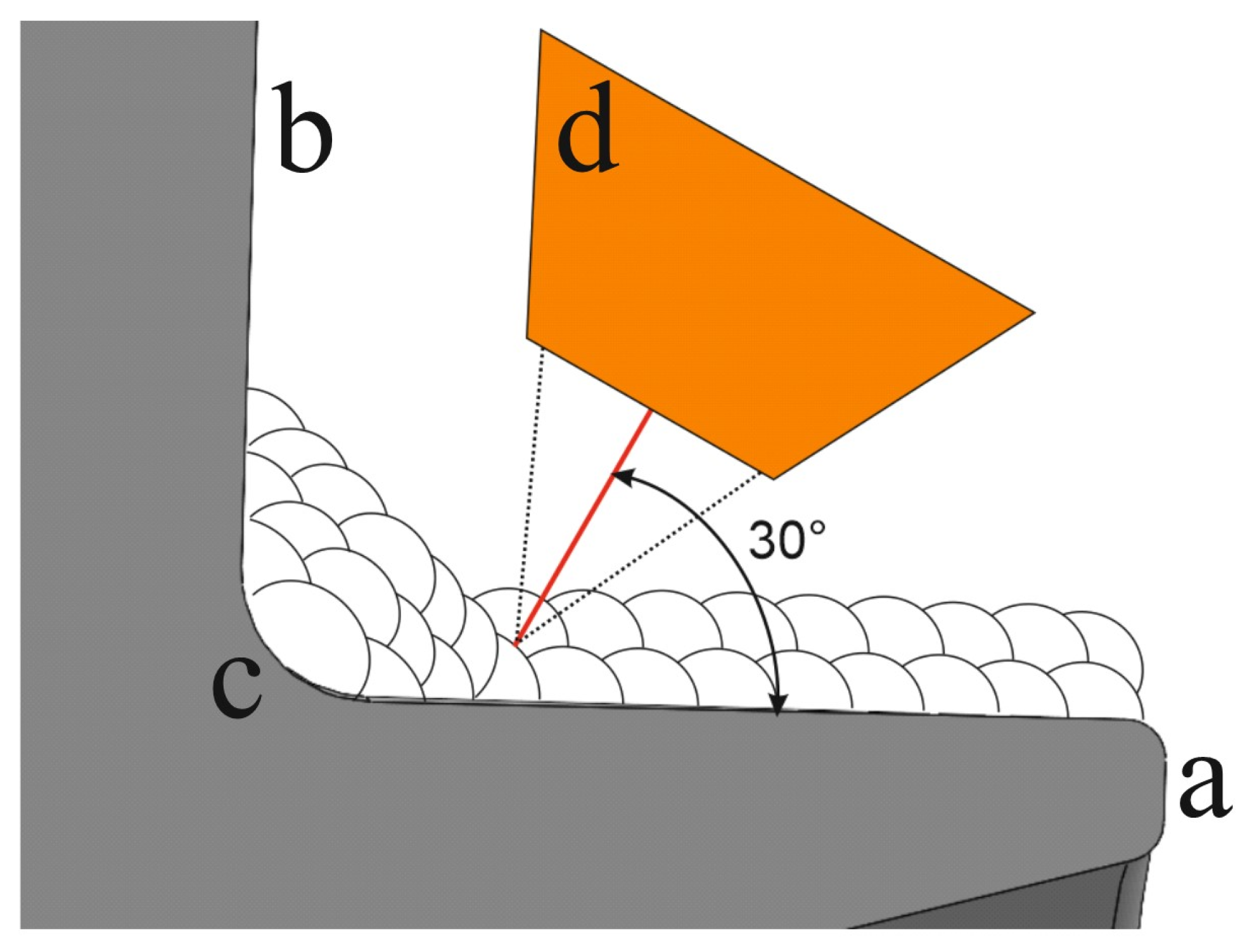
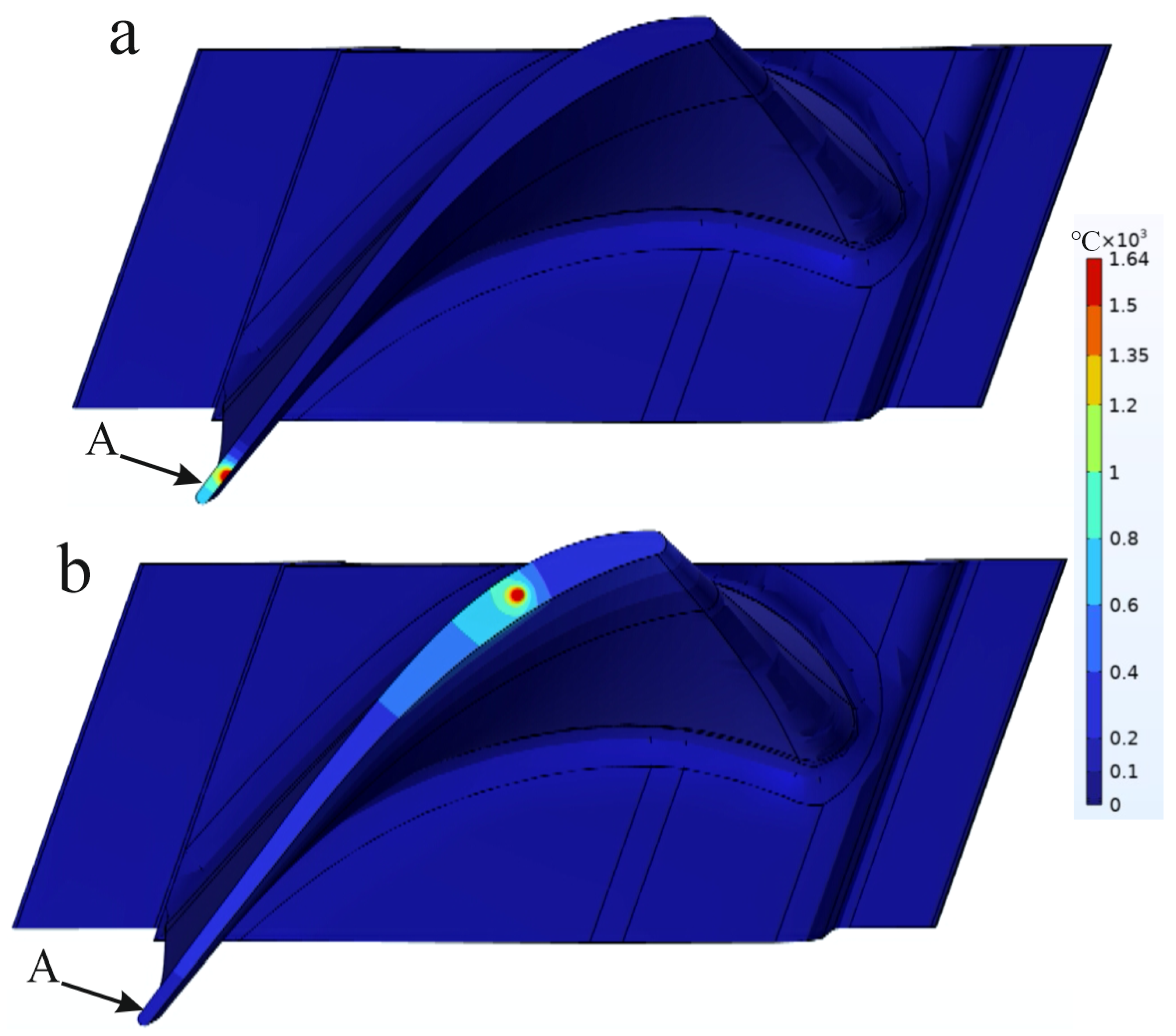
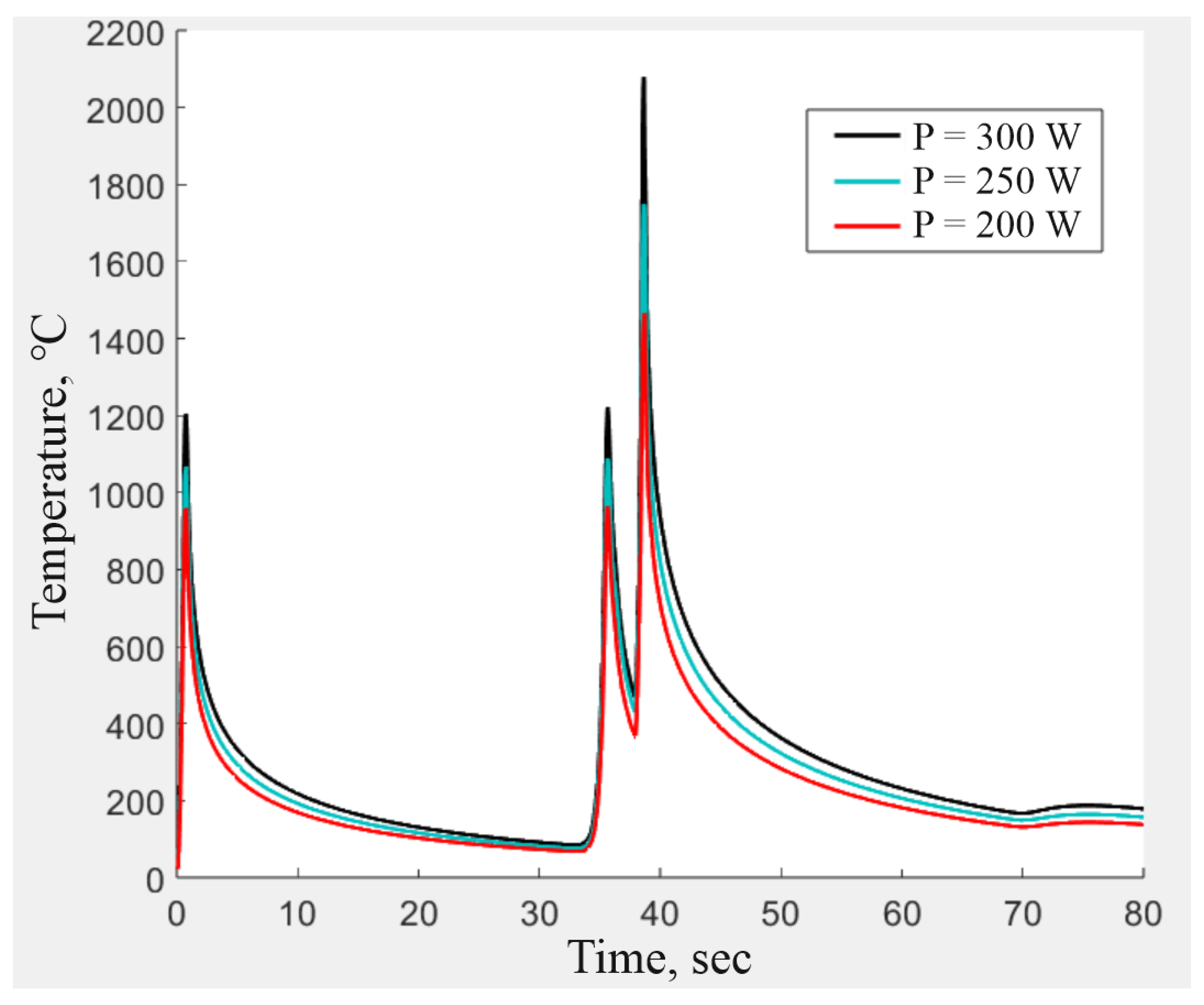
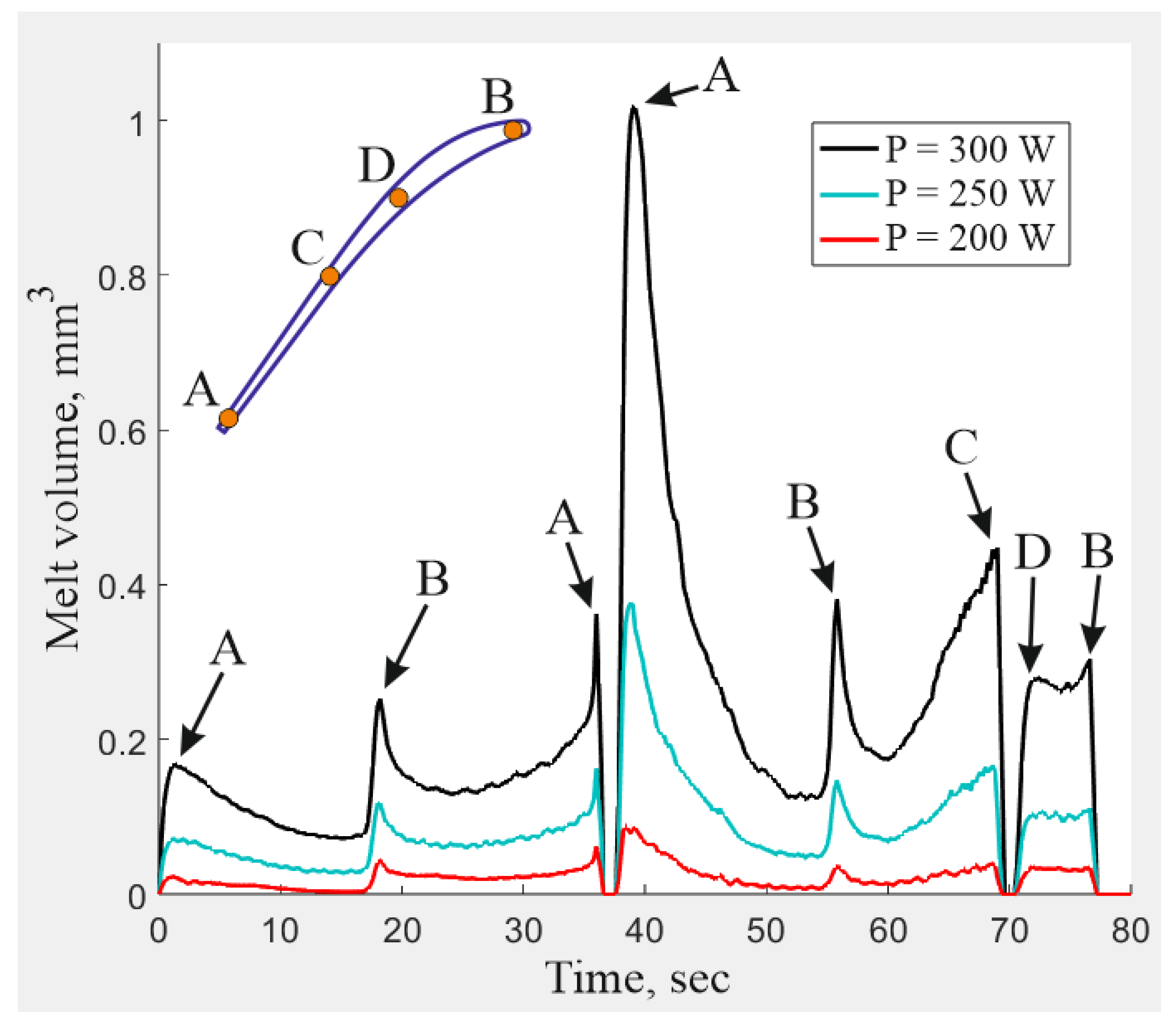
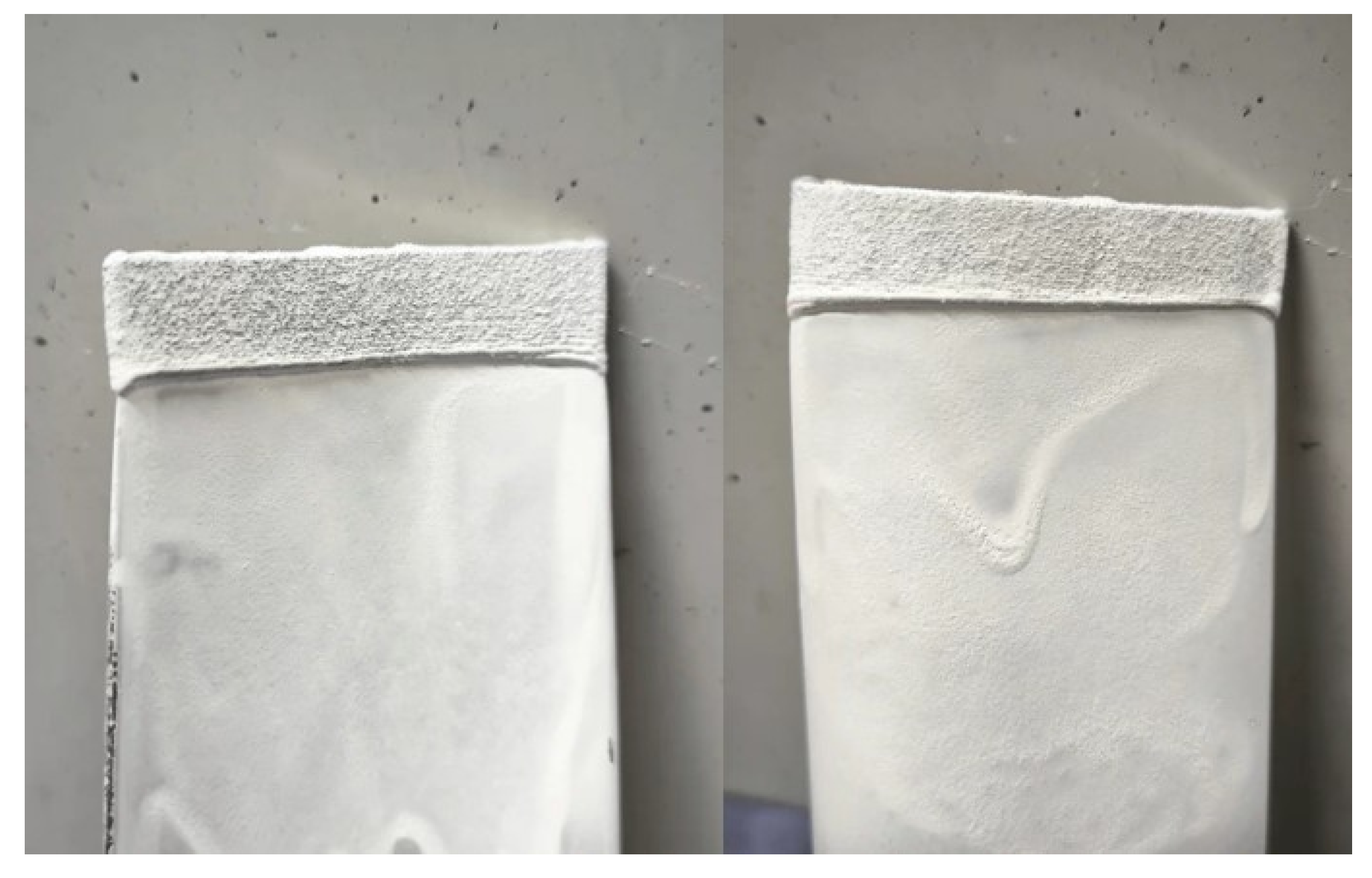
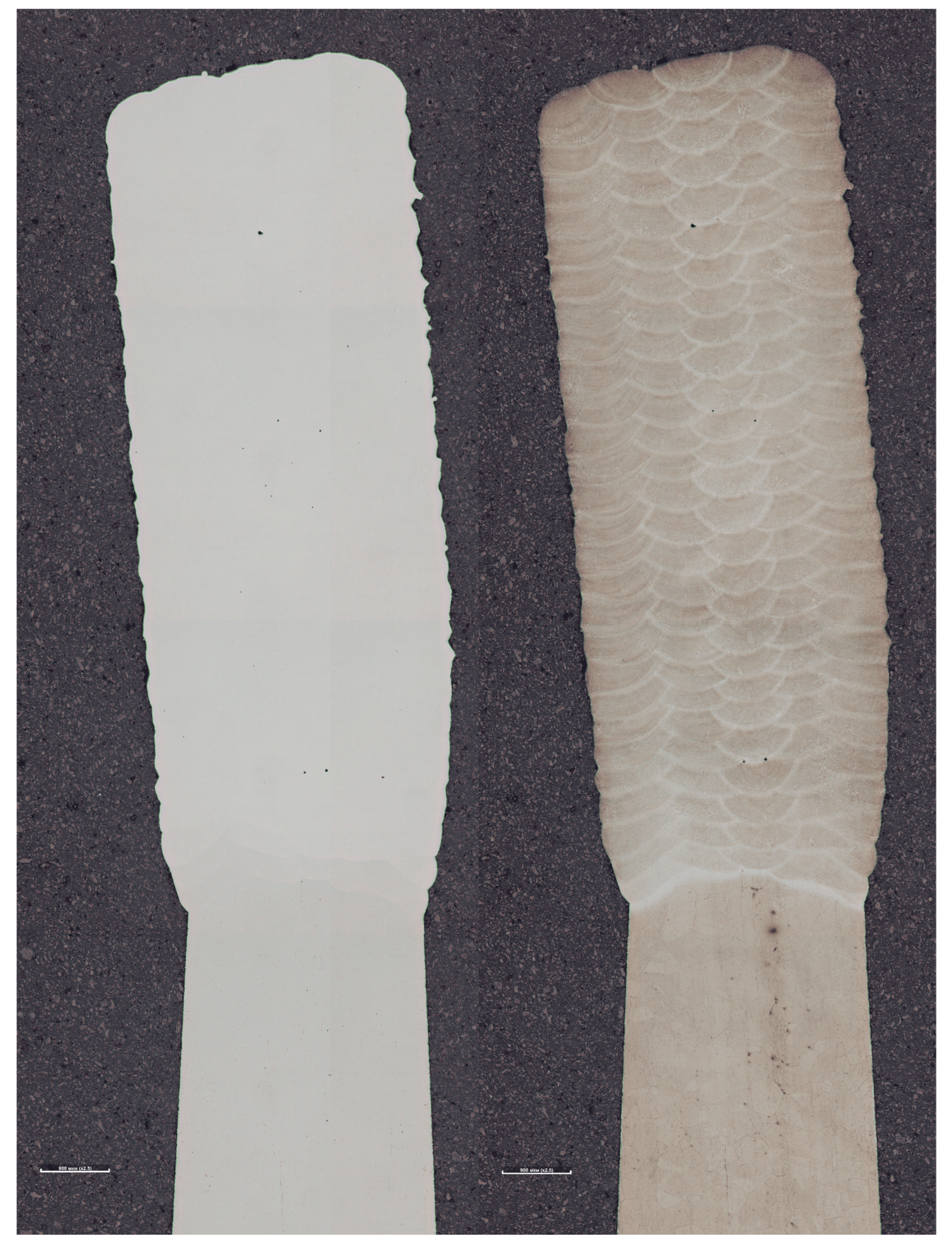

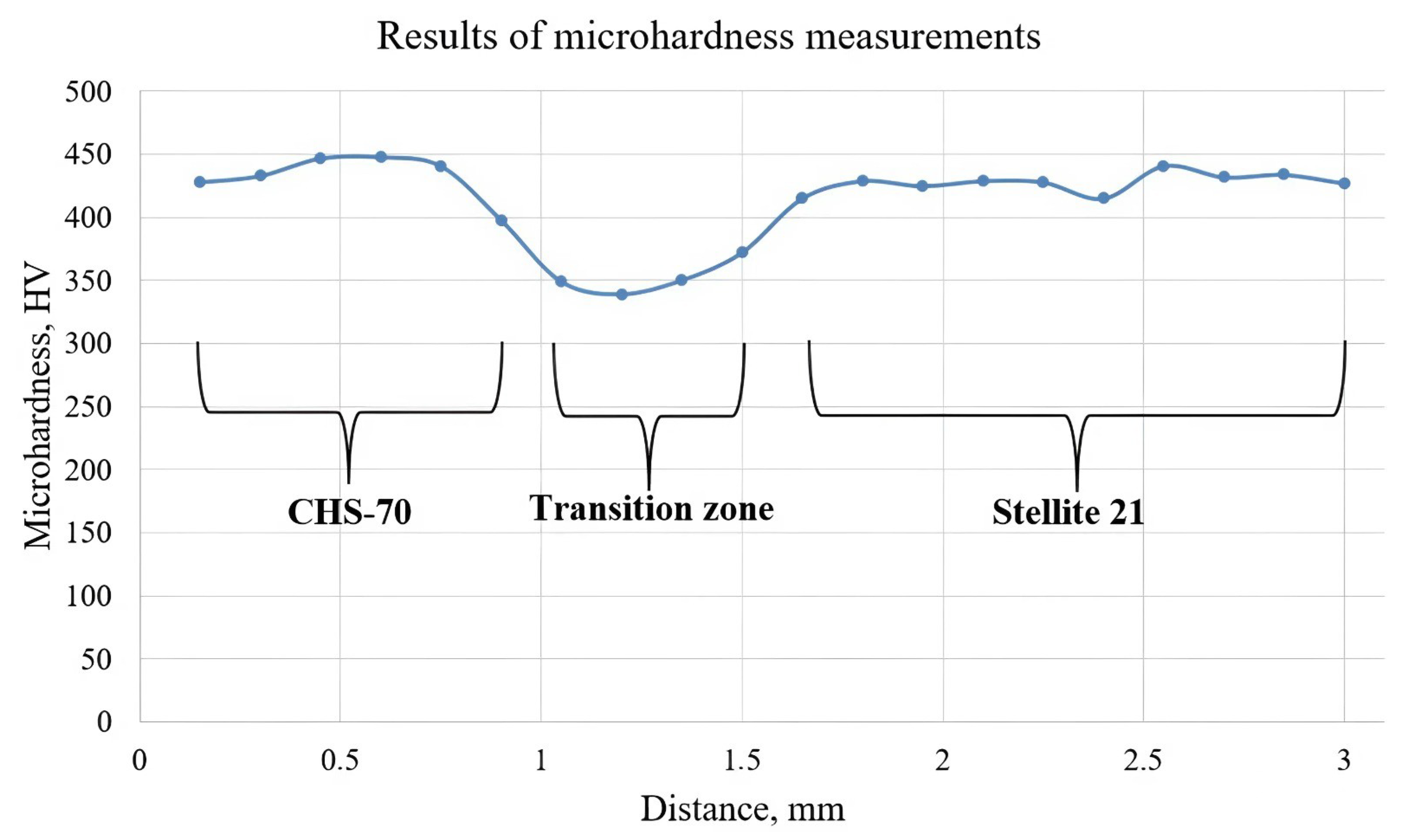
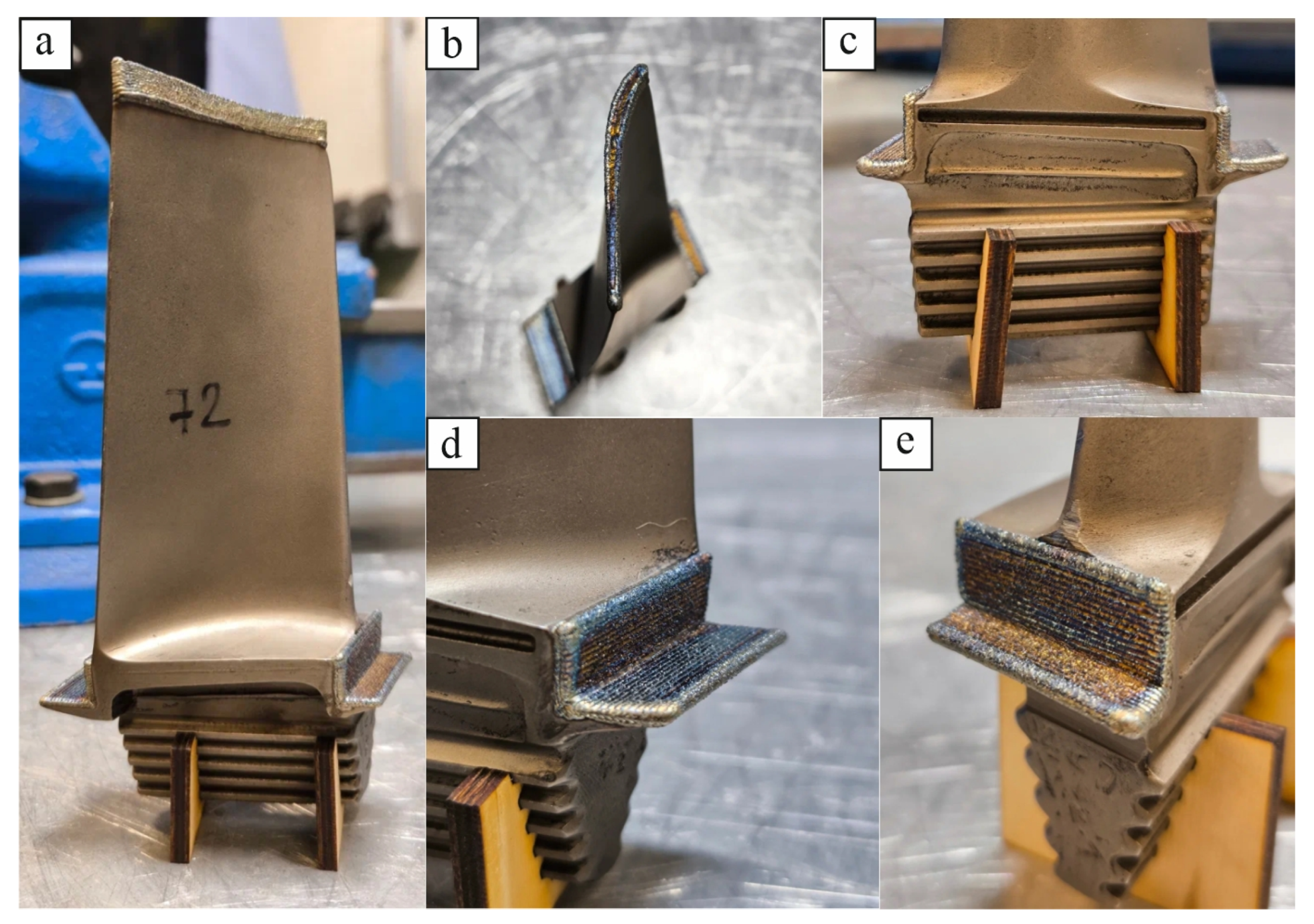
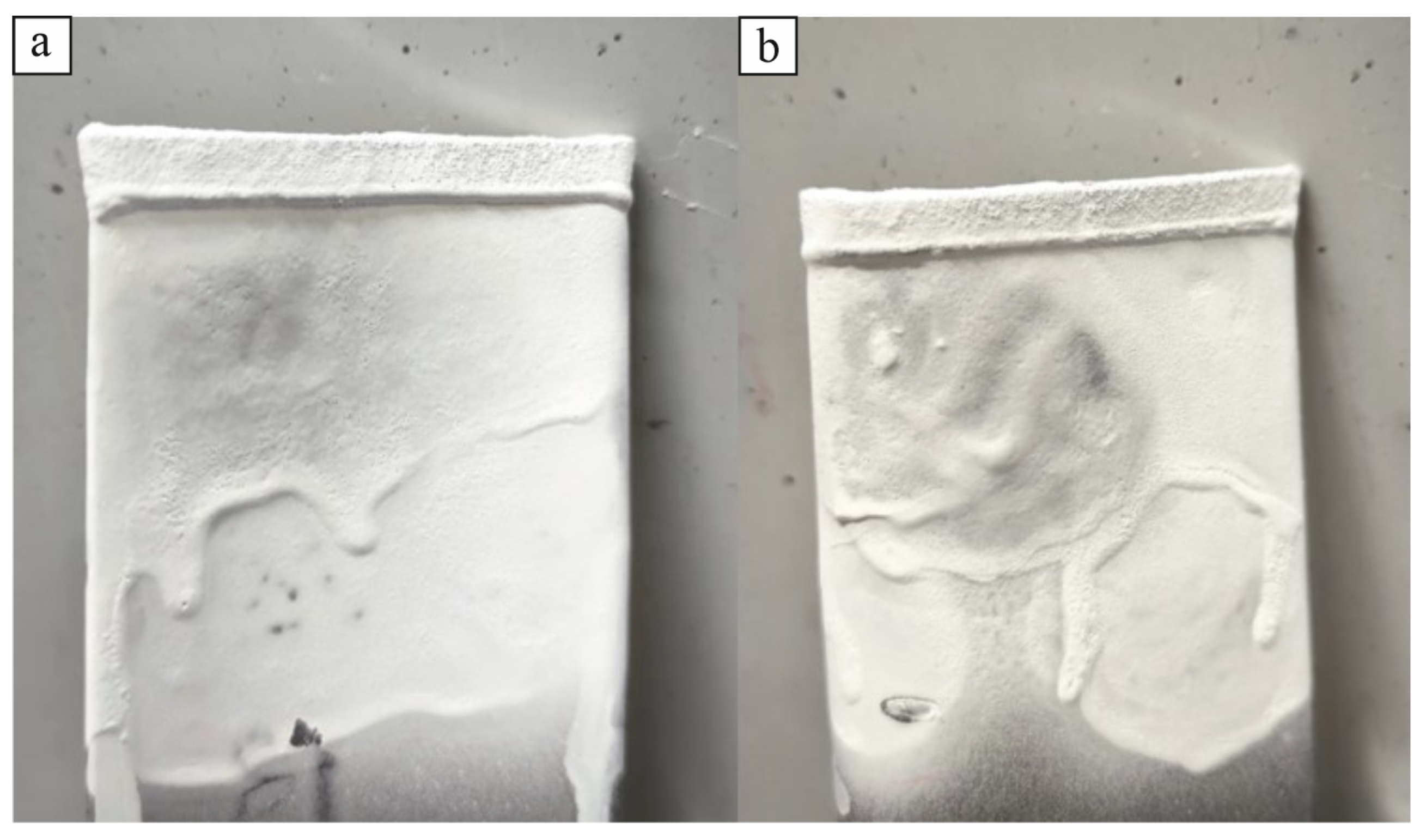

| Alloy Grade | Element Content, % Mass | ||||||||
|---|---|---|---|---|---|---|---|---|---|
| Ni | Co | Al | Ti | Mo | W | C | Cr | Nb | |
| ChS-70 | The rest | 10.5 | 2.8 | 4.6 | 2.0 | 5.0 | 0.08 | 15.5 | 0.3 |
| Alloy Grade | Element Content, % Mass | ||||||
|---|---|---|---|---|---|---|---|
| Ni | Co | Fe | Mo | C | Cr | Si | |
| Stellite 21 | 3.0 | The rest | 1.5 | 5.5 | 0.25 | 27.0 | 1.0 |
| No. | Parameters | ||||
|---|---|---|---|---|---|
| Power (P), W | Velocity (V), mm/s | Powder Consumption (G), g/min | Beam Diameter (D), mm | Transportation Gas Flow Rate, L/min | |
| 1 | 200 | 3 | 2 | 1 | 4 |
| 2 | 200 | 4 | 2.5 | ||
| 3 | 200 | 5 | 3 | ||
| 4 | 250 | 3 | 2 | ||
| 5 | 250 | 4 | 3.5 | ||
| 6 | 250 | 5 | 4 | ||
| 7 | 300 | 3 | 2 | ||
| 8 | 300 | 4 | 4.5 | ||
| 9 | 300 | 5 | 5 | ||
| 10 | 350 | 3 | 2 | ||
| 11 | 350 | 4 | 5.5 | ||
| 12 | 350 | 5 | 6 | ||
| 13 | 400 | 3 | 2 | ||
| 14 | 400 | 4 | 6.5 | ||
| 15 | 400 | 5 | 7 | ||
| P, W | V, mm/s | G, g/min | , mm | , mm | D, mm |
|---|---|---|---|---|---|
| 250 | 3 | 2 | 0.66 | 0.4 | 1 |
| Alloy | Measurement No., Microhardness in HV | |||||||||
|---|---|---|---|---|---|---|---|---|---|---|
| 1 | 2 | 3 | 4 | 5 | 6 | 7 | 8 | 9 | 10 | |
| ChS-70 | 428 | 433 | 447 | 448 | 441 | 398 | 349 | 339 | 350 | 372 |
| Stellite 21 | 415 | 429 | 425 | 429 | 428 | 415 | 441 | 432 | 434 | 427 |
| Alloy/Sample | Yield Strength, , MPa | Relative Elongation, , % | Tensile Strength, , MPa |
|---|---|---|---|
| ChS-70 | 750 | 3.0 | 900 |
| Stellite 21 | 550 | 9.0 | 724 |
| 1 | 692 | 6.7 | 995 |
| 2 | 743 | 4.5 | 982 |
| Average value for samples | 717.5 | 5.6 | 988.5 |
| Standard deviation for samples | 36 | 1.6 | 9.2 |
| Part | Blade, mm | Locking Piece (a), mm | Locking Piece (b), mm | Sealing Crest, mm |
|---|---|---|---|---|
| Value | 147.5–148 | 30–30.4 | 31.1–31.5 | 48.1–48.5 |
Disclaimer/Publisher’s Note: The statements, opinions and data contained in all publications are solely those of the individual author(s) and contributor(s) and not of MDPI and/or the editor(s). MDPI and/or the editor(s) disclaim responsibility for any injury to people or property resulting from any ideas, methods, instructions or products referred to in the content. |
© 2025 by the authors. Licensee MDPI, Basel, Switzerland. This article is an open access article distributed under the terms and conditions of the Creative Commons Attribution (CC BY) license (https://creativecommons.org/licenses/by/4.0/).
Share and Cite
Tukov, S.; Korsmik, R.; Zadykyan, G.; Mukin, D.; Mendagaliev, R.; Roschin, N. Development of a Laser Cladding Technology for Repairing First-Stage High-Pressure Turbine Blades in Gas Turbine Engines. Metals 2025, 15, 957. https://doi.org/10.3390/met15090957
Tukov S, Korsmik R, Zadykyan G, Mukin D, Mendagaliev R, Roschin N. Development of a Laser Cladding Technology for Repairing First-Stage High-Pressure Turbine Blades in Gas Turbine Engines. Metals. 2025; 15(9):957. https://doi.org/10.3390/met15090957
Chicago/Turabian StyleTukov, Stepan, Rudolf Korsmik, Grigoriy Zadykyan, Dmitrii Mukin, Ruslan Mendagaliev, and Nikita Roschin. 2025. "Development of a Laser Cladding Technology for Repairing First-Stage High-Pressure Turbine Blades in Gas Turbine Engines" Metals 15, no. 9: 957. https://doi.org/10.3390/met15090957
APA StyleTukov, S., Korsmik, R., Zadykyan, G., Mukin, D., Mendagaliev, R., & Roschin, N. (2025). Development of a Laser Cladding Technology for Repairing First-Stage High-Pressure Turbine Blades in Gas Turbine Engines. Metals, 15(9), 957. https://doi.org/10.3390/met15090957







